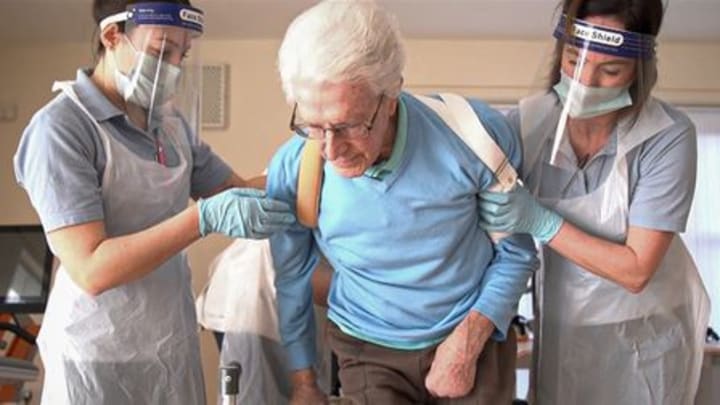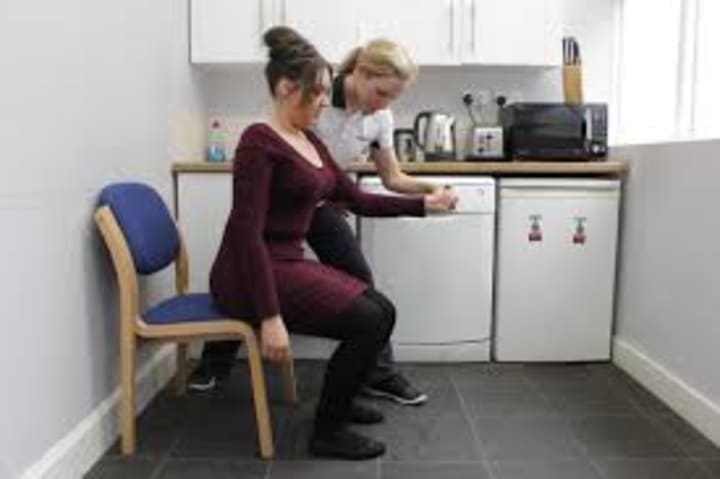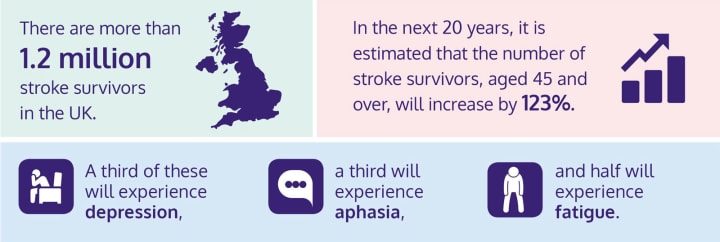Stroke Care In The UK – Early Supported Discharge (ESD) and The Postcode Lottery
Why where you live matters

What is Early Supported Discharge?
Anyone who is unfortunate enough to have a stroke and is admitted to one of the specialist units in the country, when it comes around to discharge, will have an introduction from ESD. They should meet them while still on the wards and the first visit will be set up soon after the patient’s arrival (in theory) at home.
The patient will receive a care plan tailored to the effects of their stroke and it will be delivered in the community at high intensity. Early Supported Discharge Teams are made up of a mix of Physiotherapists, Occupational Therapists, Speech and Language Therapists, and Health Care Assistants.

Why Is It Important?
The aim of ESD isn’t just to get the patient out of the hospital and to free up bed space (although that is a massive perk). A good service can reduce long-term mortality and institutionalisation for up to 50% of survivors. The idea is to give the patient as much therapy as possible when there is the best chance of improvement. The first three months after a stroke are crucial. They are when the damaged neural pathways are most likely to be ‘rewired’ in a process called neuroplasticity. Having access to Clinicians with a specialism in stroke, and support to perform rehabilitation (rather than just a printed sheet of exercises that the patient may or may not remember to do) are not the limit of their services. ESD provide expert advice for any number of queries, from driving regulations, incontinence management and accessing stroke-specific mental health resources. This is specialist information that may not be at the fingertips of the Community Nursing Team who must be able to manage a wide range of conditions. Community Nursing Teams also typically do not visit with the frequency of ESD.

Where You Live Matters.
Unless you are reading this from another country, you are probably aware that the NHS is split up into several Trusts, with each Trust able to spend its allocation of budget however it sees fit, as long as it sticks to NICE guidelines. Unfortunately, there are no NICE guidelines for how long ESD should last for acute cases.
If you are lucky enough to live in Birkenhead or any other part of the Wirral, the specialist stroke unit at Arrowe Park Hospital (attached to The Wirral University Teaching Hospital) will give you 12 weeks of ESD visits. Ashford & St Peter’s Hospital near Heathrow will also let you stay with the service for up to 12 weeks. However if you live in Hereford you’ll only receive four weeks of care from an specialist ESD team, with the majority of Trusts offering programmes between 6 and 8 weeks long.
Access to a psychologist through ESD can vary massively. Depression affects a third of stroke patients within the first year, and mood and personality fluctuations due to the cognitive changes are not uncommon. They are an important member of the clinical team. But once again a patient’s postcode will account for whether they see someone with a specialism in their ailment. For example in London if a patient resides in Hillingdon, they will get to see a psychologist as part of their ESD treatment (if it is required). However just ten minutes down the road in Richmond, the ESD team doesn’t offer this service.

To Conclude.
Stroke (both ischemic and haemorrhagic) patients are hugely affected by the quality of care that they receive when they are back in the community. Investment in ESD is saving the general public cold hard cash in the long term. Better outcomes mean less spent on social care, and more people back to their working lives paying taxes instead of claiming benefits. However, the Government (and at times The Commissioning Board) have problems with results that they cannot measure. You cannot contact a patient in five years’ time and ask them what assistance they would have required from the Government if they had not had proper use of their right hand, or if they had not been able to remain in their own home. They cannot make a statistic out of it and put it in a graph to compare with year on year. Yet common sense tells us it is still true. Those that have squeezed as many days out of their ESD programmes as possible recognise that. But with the NHS budget so unbearably tight, we have to wonder if it’s been stolen from another beneficial community service. These are the times we live in.
Figures and information from www.thestrokeaudit.org & nhs.co.uk (individual Trust sites within that host)
About the Creator
Reader insights
Outstanding
Excellent work. Looking forward to reading more!
Top insights
On-point and relevant
Writing reflected the title & theme
Easy to read and follow
Well-structured & engaging content
Expert insights and opinions
Arguments were carefully researched and presented
Eye opening
Niche topic & fresh perspectives
Compelling and original writing
Creative use of language & vocab
Heartfelt and relatable
The story invoked strong personal emotions
Excellent storytelling
Original narrative & well developed characters
Masterful proofreading
Zero grammar & spelling mistakes





Comments (1)
This was an eye opener! Thank you for sharing this